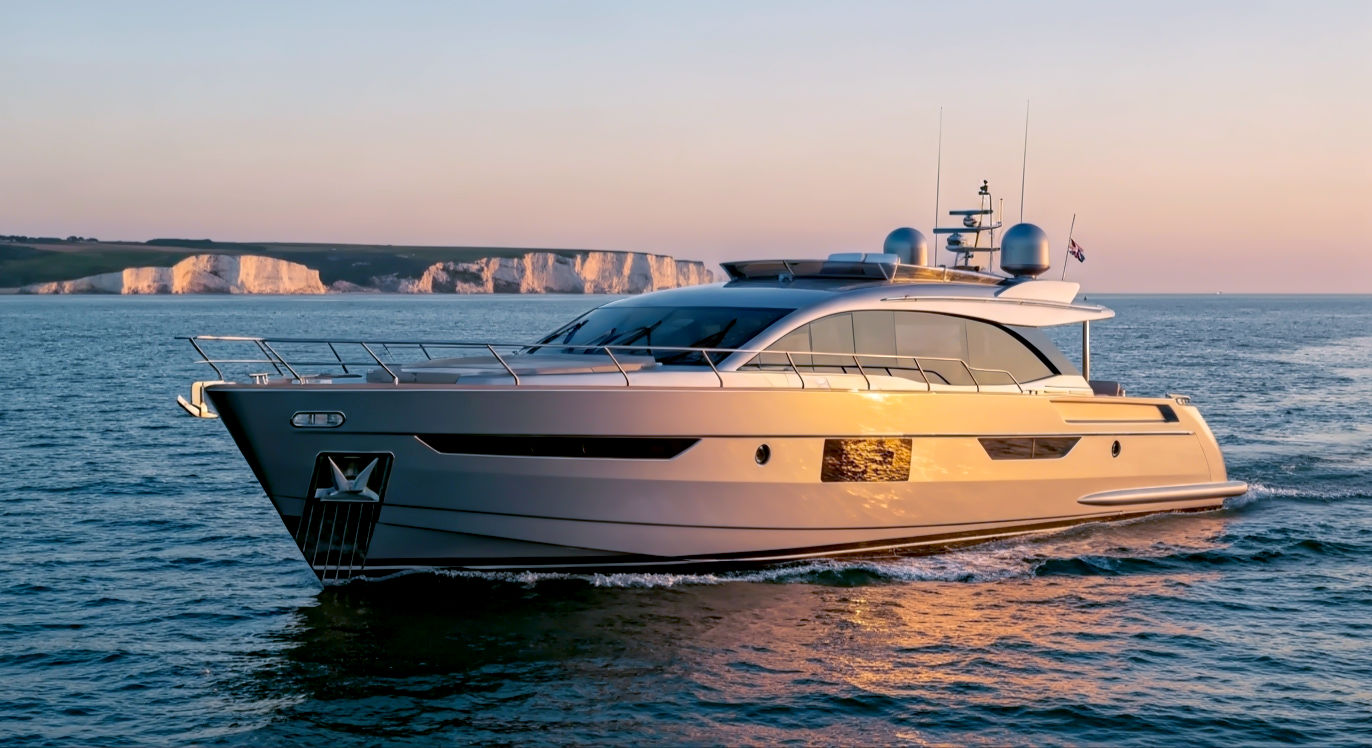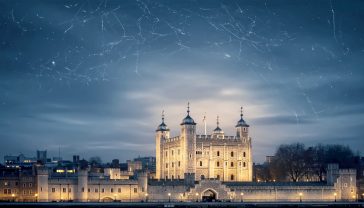The Unsinkable Legacy: Britain’s Grand Voyage in Luxury Yacht Building
Discover Britain’s epic story of maritime excellence. Explore the history of shipbuilding, from naval power to the world-leading luxury yachts of today.

This post may contain affiliate links. If you make a purchase through these links, we may earn a commission at no additional cost to you.
It’s a story etched in the salt spray of the North Sea and the polished brass of a captain’s compass. It’s about more than just boats; it’s about a nation that looked to the horizon and decided to master it. For centuries, Britain wasn’t just an island—it was the world’s shipyard. From the mighty warships that ruled the waves to the graceful yachts that danced upon them, British hands built vessels that defined an era. This isn’t just a tale of wood, steel, and sails. It’s the story of how a small island nation built a maritime legacy of luxury, power, and unparalleled excellence that still echoes today.
Think of the sleek lines of a modern superyacht gliding into a sun-drenched marina. It seems a world away from the creaking timbers of a 17th-century Royal Navy vessel, doesn’t it? But they are connected by a thread of craftsmanship, innovation, and a relentless pursuit of perfection that is uniquely British. We’ll journey back in time, from the muddy banks of the Thames where kings commissioned their pleasure barges, through the smoky industrial heartlands of the Clyde and the Tyne that forged an empire, to the modern, high-tech yards of today where tradition meets cutting-edge technology. Along the way, we’ll meet the brilliant designers, the tireless craftsmen, and the wealthy patrons who together created the most beautiful and advanced vessels the world had ever seen. So, grab a brew, settle in, and let’s set sail on a grand tour of Britain’s shipbuilding story.
From Royal Barges to Racing Clippers: The Dawn of British Maritime Craft
Long before the word ‘yacht’ was commonplace, the seeds of British maritime leisure were sown on its rivers and coastlines. The story doesn’t start with luxury, but with power and practicality.
The King’s Pleasure Boats
In medieval and Tudor times, the River Thames wasn’t just a waterway; it was London’s main highway. Henry VIII, a king known for his grand tastes, had a fleet of magnificent royal barges. These weren’t humble rowing boats. They were ornate, gilded vessels, rowed by dozens of oarsmen in royal livery, designed to ferry the king and his court between palaces at Greenwich, Westminster, and Hampton Court. They were floating status symbols, decorated with elaborate carvings, silk banners, and velvet cushions. While not ‘yachts’ in the modern sense, they were the first signs that a boat could be more than just a tool for trade or war—it could be a statement of wealth and power.
This idea of a pleasure craft truly arrived in Britain in 1660. When King Charles II was restored to the throne after his exile in Holland, the Dutch presented him with a 60-foot sailing vessel named Mary. The Dutch called such a fast, light vessel a ‘jacht’, meaning ‘hunter’. Charles, a keen sailor, was captivated. He and his brother, the Duke of York, soon commissioned their own yachts, racing each other on the Thames for fun. This royal passion kick-started a trend. The aristocracy, always keen to copy the monarch, began commissioning their own sailing yachts. The first yacht club in the world, the Royal Cork Yacht Club, was founded in Ireland (then under British rule) in 1720, and the famous Royal Yacht Squadron on the Isle of Wight followed in 1815. Yachting had arrived as the sport of kings and gentlemen.
The Age of Sail and the Need for Speed
While the wealthy played on the water, Britain’s commercial shipbuilding was becoming the engine of a global empire. The 18th and 19th centuries were the golden age of sail. British shipyards in places like London, Bristol, and Liverpool were churning out thousands of vessels: sturdy merchant ships for the East India Company, nimble frigates for the Royal Navy, and hardworking fishing boats.
This era was defined by wood: mighty English oak for the frames, strong elm for the keels, and tall pines from the Baltic for the masts. The craftsmanship was extraordinary. Men known as shipwrights, using tools like adzes, saws, and augers, could shape these massive timbers into elegant, seaworthy hulls. It was slow, laborious work, requiring immense skill and knowledge passed down through generations.
The drive for profit fuelled a race for speed. The most famous examples were the tea clippers. In the mid-19th century, the first shipment of tea to arrive in London from China each season fetched the highest price. This created a frantic race across 16,000 miles of ocean. Ship designers and builders in yards like those in Aberdeen and on the River Clyde pushed naval architecture to its limits. They created long, narrow, and incredibly fast ships with enormous sail plans. Famous clippers like the Cutty Sark (built in Dumbarton, Scotland in 1869) and the Thermopylae became legends, their names synonymous with British maritime speed and grace. Though built for cargo, their design—focused on elegance and performance—heavily influenced the luxury yachts that would follow. They proved that a British-built vessel could be both a workhorse and a thing of beauty.
The Industrial Revolution: When Iron Men Built Iron Ships
The 19th century brought a revolution that would change shipbuilding forever. The gentle sound of the adze on oak was replaced by the deafening clang of the hammer on iron. Britain was at the heart of the Industrial Revolution, and its shipyards were about to become the most powerful and productive on Earth.
Brunel’s Giants and the Rise of Steam
The shift from wood to iron, and then to steel, was monumental. Iron hulls were stronger, lighter, and more durable than wooden ones. They could be built bigger, carry more cargo, and withstand the punishing vibrations of a new power source: the steam engine.
At the forefront of this change was a man of genius: Isambard Kingdom Brunel. He wasn’t just an engineer; he was a visionary. His three great ships changed the course of maritime history.
- The SS Great Western (1838): A wooden-hulled paddle steamer, she was the first steamship purpose-built for crossing the Atlantic, proving that steam power was reliable over long distances.
- The SS Great Britain (1843): This was the game-changer. She was the first ocean-going ship to have an iron hull and a screw propeller. At the time, she was the largest vessel in the world. Her iron construction was revolutionary, making her immensely strong. Today, she sits restored in Bristol, a magnificent testament to British innovation.
- The SS Great Eastern (1858): A true leviathan, she was five times larger than any ship built before her. Designed to carry 4,000 passengers to Australia without refuelling, she was a marvel of engineering but a commercial failure in her time. Her immense size and strength later found a perfect purpose: laying the first transatlantic telegraph cable, connecting Europe and America.
These iron giants were born in the bustling new shipbuilding centres. The River Clyde in Scotland became known as ‘the shipyard of the world’. Famous yards like John Brown & Company and Fairfield Shipbuilding turned out everything from naval dreadnoughts to luxurious ocean liners. On the River Tyne and River Wear in North East England, yards like Swan Hunter and Palmer’s launched thousands of vessels, their slipways defining the skyline and employing entire communities. Life in these towns revolved around the shipyard whistle and the tides. It was tough, dangerous work, but it filled the men with immense pride. A ship’s launch was a huge event, a celebration of a community’s skill and hard work.
The Birth of the Steam Yacht
Just as the aristocracy had copied King Charles II’s sailing yachts, the new class of fabulously wealthy industrialists and financiers of the Victorian era wanted their own steam-powered vessels. The steam yacht was born. These were not just boats; they were floating palaces. They offered a level of luxury and comfort previously unimaginable at sea.
These yachts were showcases of British engineering and craftsmanship. Their steel hulls were elegant and strong. Their triple-expansion steam engines, developed in Britain, were powerful and reliable. Inside, they were fitted out by the finest cabinet makers, upholsterers, and artisans. They featured plush saloons panelled in polished mahogany, grand dining rooms with crystal chandeliers, marble bathrooms, and multiple guest suites.
Yards like Camper & Nicholsons in Gosport (founded in 1782) and Sunbeam (later evolving into Sunseeker) began to make a name for themselves in this new market. They built magnificent steam yachts for British dukes, American tycoons like the Vanderbilts, and even foreign royalty. A large steam yacht was the ultimate status symbol of the Gilded Age, a private kingdom that could travel the world in splendid isolation. It cemented Britain’s reputation not just for building strong ships, but for building the most luxurious ships in the world.
The Golden Age: Ocean Liners and Elegant Racers
The late 19th and early 20th centuries marked the absolute peak of British shipbuilding. It was an era of fierce international competition, dazzling luxury, and breathtaking beauty, both in the commercial and leisure spheres.
Palaces of the Atlantic
The most prestigious shipping route in the world was the North Atlantic, connecting Britain with America. The shipping lines that dominated this route, principally Britain’s Cunard Line and White Star Line, competed fiercely for the ‘Blue Riband’, an award for the fastest crossing. This rivalry drove the construction of some of the most famous ships ever built.
These weren’t just transport; they were floating statements of national pride and technological prowess. Yards like John Brown & Company on the Clyde and Harland & Wolff in Belfast became famous for building these ocean liners.
- The Lusitania and Mauretania (1907): Built for Cunard, these sisters were revolutionary. Powered by steam turbines—a British invention by Charles Parsons—they were incredibly fast. The Mauretania held the Blue Riband for an astonishing 20 years.
- The Olympic and Titanic (1911-12): White Star Line’s response was not speed, but size and luxury. Built in Belfast, they were the largest man-made moving objects in the world. Their interiors were designed to rival the finest hotels in London or Paris, with grand staircases, swimming pools, squash courts, and opulent First-Class suites. The tragic story of the Titanic is well known, but it should not overshadow the incredible achievement of her construction.
- The Queen Mary (1936) and Queen Elizabeth (1940): The culmination of this era. Built by John Brown on the Clyde, these Cunard giants were art deco masterpieces. They represented the height of British elegance and engineering, serving as symbols of hope and prestige during the difficult years of the Great Depression and the Second World War.
Building these ships was a monumental task. It required tens of thousands of workers, from the riveters hammering the hull plates together to the French polishers finishing the ballroom floors. They were a source of immense pride, connecting Britain to the world and showcasing its industrial might.
The Great J-Class Yachts
While liners ruled the waves commercially, the world of yachting was experiencing its own golden age. The most prestigious sailing competition was the America’s Cup. Between the two World Wars, this contest was dominated by the magnificent J-Class yachts. These were enormous single-masted racing sloops, over 120 feet long, with towering masts and vast sail areas. They were the most advanced and beautiful racing yachts ever created.
Britain mounted several challenges for the Cup, spearheaded by men like the tea magnate Sir Thomas Lipton. Though he famously never won, his efforts spurred on British yacht design and construction. Designers like Charles E. Nicholson of Camper & Nicholsons were geniuses, creating yachts that were both incredibly fast and breathtakingly elegant.
Yachts like Shamrock V, Velsheda, and Endeavour were built to the highest possible standards. Their steel frames and mahogany-planked hulls were works of art. Racing them required huge crews of professional sailors and nerves of steel. While they were built for pure speed, their grace and beauty captured the public’s imagination. They represented a perfect fusion of technology, craftsmanship, and sporting ambition, another pinnacle of British maritime excellence. These legendary yachts cemented the reputation of yards like Camper & Nicholsons as the world’s leading builders of large luxury sailing vessels.
Post-War Challenges and the Rise of a New Industry
The Second World War marked a turning point. British shipyards had worked tirelessly to support the war effort, but the world that emerged was very different. The age of the ocean liner was ending, and global competition was intensifying.
The Decline of the Giants
The 1950s and 60s brought a perfect storm of challenges for Britain’s traditional shipbuilders.
- The Rise of Air Travel: The arrival of the passenger jet made crossing the Atlantic a matter of hours, not days. The grand ocean liners, once the only way to travel, quickly became obsolete. Ships like the Queen Elizabeth 2 (QE2), launched in 1967, were magnificent, but they were the last of their kind.
- Foreign Competition: Shipyards in countries like Japan and South Korea, rebuilt after the war with modern technology and benefiting from lower labour costs, began to dominate the market for building large cargo ships, tankers, and container vessels. They used modular construction techniques and had better industrial relations.
- Industrial Unrest: British yards were plagued by strikes and difficult relationships between management and unions, which affected productivity and reliability.
One by one, the great names of the Clyde, Tyne, and Belfast began to struggle. Yards that had employed thousands for generations closed down. It was a painful decline for communities that had built their entire identity around shipbuilding. By the 1980s, the industry that had once ‘ruled the waves’ was a shadow of its former self. The era of Britain building the world’s biggest ships was over.
A New Beginning: The Leisure Marine Industry
But as the old industry faded, a new one was being born. The post-war economic boom created a growing middle class with more disposable income and leisure time. People wanted to go boating not for racing or for show, but for family fun. This created a demand for smaller, more affordable motor cruisers.
This was a different kind of boat building. Instead of steel and rivets, the new material was Glass Reinforced Plastic (GRP), or fibreglass. This material was revolutionary. It was strong, lightweight, waterproof, and could be moulded into complex shapes. This meant boats could be mass-produced far more cheaply and quickly than traditional wooden or steel vessels.
A new generation of British boat builders emerged to meet this demand. Companies like Fairline (founded in 1963) and Princess Yachts (founded in 1965 in Plymouth) started out building small, practical family boats. Another key player was Robert Braithwaite, who in 1969 founded a company in Poole, Dorset, that would eventually become Sunseeker. They recognised that there was a market for boats that were not only practical but also stylish, fast, and exciting.
These companies were pioneers. They combined the new GRP technology with a long-standing British tradition of quality craftsmanship. They understood that even a production boat needed to feel special. They focused on clever design, high-quality interior fittings, and powerful performance. They were building not just boats, but a lifestyle. This laid the foundation for Britain to re-emerge, not as a builder of giant ships, but as a world leader in a new kind of maritime excellence: the luxury motor yacht.
Modern British Yacht Building: Quality, Innovation, and Global Prestige
Today, the clang of hammers in the giant shipyards of the Clyde and Tyne has largely fallen silent. But on the south coast of England, in places like Poole and Plymouth, a different maritime story is being written. Britain has reinvented itself as a powerhouse in the world of luxury yacht building, creating some of the most sought-after and prestigious vessels on the water.
The Big Three: Sunseeker, Princess, and Fairline
The modern British yacht industry is dominated by three globally recognised brands, often called the ‘British Big Three’. While they compete, they share a common philosophy: combining cutting-edge technology with traditional, high-quality craftsmanship.
- Sunseeker: Based in Poole, Sunseeker is perhaps the most famous British brand, known for its sleek, powerful, and glamorous performance motor yachts. They gained international fame through their association with the James Bond films, featuring in several movies as the ultimate symbol of style and speed. Sunseeker is known for its aggressive, sporty designs and its focus on exhilarating performance.
- Princess Yachts: Based in the historic maritime city of Plymouth, Princess has built a reputation for elegant design, superb seakeeping, and exceptional interior quality. Their yachts are often seen as the ‘Rolls-Royce’ of the water, focusing on timeless style, comfort, and meticulous attention to detail. They operate one of the most advanced shipbuilding facilities in the world.
- Fairline Yachts: With its heritage in Oundle, Northamptonshire, Fairline is celebrated for its understated British design and its emphasis on usability and adventure. They are known for creating yachts that are not only beautiful but also practical and brilliant to handle at sea, often winning awards for their innovative design features.
These companies don’t just assemble boats; they create them. From the initial design sketches and computer modelling to the GRP hull moulding, the intricate electrical and plumbing work, and the bespoke cabinetry and upholstery, almost everything is done in-house. This gives them immense control over quality. A walk through one of their factories reveals a fascinating blend of high technology (like 5-axis CNC routers) and traditional skills (like hand-stitching leather and finishing fine woodwork). It’s this fusion that defines the modern British yacht.
Beyond the Big Three: The Superyacht and Specialist Sector
While the production builders lead the way, Britain is also home to world-renowned yards that build and refit some of the largest and most complex custom superyachts. Pendennis Shipyard in Falmouth, Cornwall, is a global leader in this field. They are famous for their breathtaking new builds and their meticulous refits of classic and modern sailing and motor superyachts. Their work involves managing hundreds of highly skilled engineers, designers, and artisans to create truly one-of-a-kind vessels for the world’s most discerning clients.
The industry is supported by a vast network of specialist British companies that are leaders in their own fields:
- Naval Architecture and Design: Firms like Dubois Naval Architects (though the founder has passed, the legacy continues) and RWD (Redman Whiteley Dixon) are among the most respected yacht designers in the world, penning the lines of iconic superyachts.
- Marine Engineering: British firms supply everything from engines and stabilisers to advanced navigation systems.
- Interior Furnishings: The quality of the interior of a British yacht is a key selling point, with specialist craftsmen providing bespoke furniture, fabrics, and fittings.
This ecosystem of excellence is what gives British yacht building its edge. It’s not just about the final product; it’s about the depth of skill, experience, and innovation that runs through the entire industry.
The Future of British Shipbuilding: Heritage Meets Horizon
The story of British shipbuilding is one of constant evolution. From royal barges to tea clippers, iron giants to luxury motor yachts, the industry has always adapted. As it sails into the 21st century, it faces new challenges and opportunities, driven by technology, sustainability, and changing tastes.
The biggest challenge facing the industry today is sustainability. Building and running a large yacht has a significant environmental footprint. British builders are at the forefront of finding solutions. They are investing heavily in:
- Hybrid Propulsion: Developing diesel-electric systems that allow yachts to run silently and with zero emissions for short periods, perfect for cruising in protected areas.
- Advanced Hull Design: Creating more efficient hull shapes that reduce drag, meaning the yacht needs less power (and less fuel) to move through the water.
- Sustainable Materials: Sourcing responsibly forested timber, using recycled materials, and exploring new composites that are lighter and more environmentally friendly.
- Waste Management: Installing advanced onboard systems to treat waste and prevent pollution of the oceans.
The goal is to create a new generation of ‘greener’ yachts that allow owners to enjoy the sea responsibly.
Technology is also transforming the on-board experience. Modern British yachts are packed with sophisticated systems. Integrated ‘glass bridge’ control systems allow the captain to monitor and control everything from navigation and engines to lighting and air conditioning from a series of touchscreens. Smart technology means owners can control aspects of their yacht from a tablet or smartphone. The demand for connectivity at sea—high-speed internet for work or entertainment—is also driving innovation.
Despite these changes, the core appeal of a British-built yacht remains the same: quality and heritage. In a world of mass production, the ‘Made in Britain’ label signifies a commitment to craftsmanship, attention to detail, and a maritime legacy stretching back centuries. It’s a story of resilience and reinvention. The industry has navigated the decline of commercial shipbuilding to emerge as a world leader in the luxury sector. The skills of the shipwright, passed down through generations, have not been lost; they have been adapted and applied in new ways.
The future of British shipbuilding lies in successfully blending this proud heritage with a forward-thinking approach to technology and sustainability. It’s about continuing to build vessels that are not only symbols of luxury and performance but also masterpieces of engineering and design, ready for the next chapter in Britain’s unending relationship with the sea.
Further Reading
To explore this topic in greater depth, we recommend the following authoritative resources:
- National Historic Ships UK: The advisory body for historic vessels in the UK, offering a wealth of information on maritime heritage. (www.nationalhistoricships.org.uk)
- The National Maritime Museum, Greenwich: The world’s largest maritime museum, home to countless artefacts and archives covering the breadth of British sea-faring history. (www.rmg.co.uk/national-maritime-museum)
- Boat International: A leading publication for the superyacht industry, providing news, analysis, and features on modern luxury yacht building. (www.boatinternational.com)
- SS Great Britain Trust: The official website for Brunel’s revolutionary ship in Bristol, offering a fascinating insight into Victorian shipbuilding and engineering. (www.ssgreatbritain.org)






